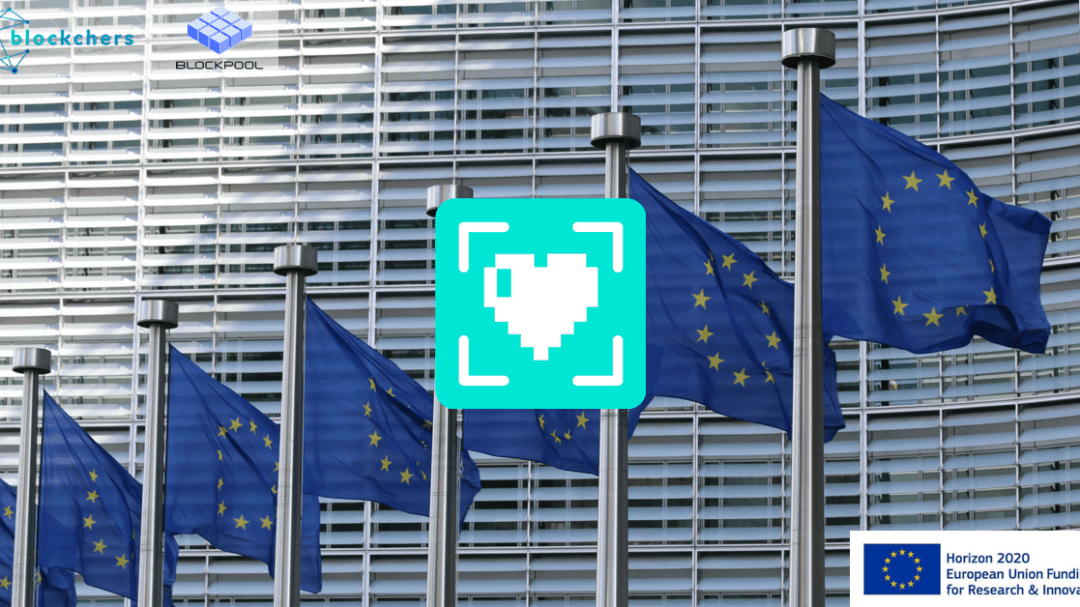
We are proud to announce that SmartAid is under the winning team of two EU funded Horizon 2020 programs: Blockchers and Blockpool.
SmartAid is the next generation marketing, funding and reporting tool for non-profit organizations, seamlessly connecting donors with charitable projects. Blockchain technology allows SmartAid to introduce a new era of transparency, efficiency and effectiveness within the aid industry. By drastically reducing costs, SmartAid maximizes the value, which arrives at the people in need.
The Background
Our world is facing global challenges. Next to the almost ordinary crisis, like natural disasters, the effects of climate change, and wars, we need to deal with the pandemic outbreak of COVID-19, which has been tragic and costs many lives. However, while the economic consequences are going to hurt developed countries, they are going to be devastating for the developing world. Already before the pandemic, over 200 million people were assessed in need of humanitarian assistance.
To fight sorrow and misery, to create perspectives for humans living in less privileged countries and to turn our world into a better place for everyone, requires the help of the wealthy population. In the year 2019, over 25.3 billion EUR have been donated worldwide for international humanitarian assistance, almost 2 billion EUR from EU institutions alone, and over 2.5 billion EUR from Germany. (1)
The Problem
In poor countries, even small amounts of money can make the difference between sending your kid to school or sending them hungry to bed. Unfortunately, any type of costs diminish the value, which arrives at the people in need.
SmartAid addresses the high costs, arising through a lack of transparency and automation in the charity industry. Opaque and outdated systems result in high expenses for both donors and aid projects. For receiving organizations, financial reporting to their sponsors is related to substantial efforts. In return, the financiers also need to invest money to audit their aid projects. Manual reporting is not only costly but also vulnerable to human error and even fraud. Corruption is often an issue in aid-receiving countries. Furthermore, uncertainty about whether their donations indeed arrive at the intended destination might reduce the willingness of private donors to contribute.
In addition, the costs related to foreign fiat currency transfer are exorbitantly high. Bank fees, which eat up to 30% of the transaction volume, are no rarity. Furthermore, once donations are transferred and covered into the local currency, funds are exposed to high inflation risk, possibly making them worthless within weeks. Last but not least, measuring the impact of a donation today is very costly and can be only vaguely estimated through long term studies and surveys.
The Solution
Transparency and automation allow the creation of efficiency gains. SmartAid eliminates unnecessary cost drivers, caused through manual reporting systems, in the charity and non-profit industry.
In the current development phase, SmartAid uses a pull approach to mirror donations in fiat currency, like Euro, on the SmartAid blockchain. A PayPal API connects the traditional fiat payment world with our blockchain system, where all funding streams are documented tamper-proof, transparent and in historical order. For each donor, an individual token contract is deployed, a matching amount of tokens minted, and transferred to an address, representing the beneficiary’s bank account. By representing individual donations through a unique – thus distinguishable token, full transparency about the usage of each donor fund can be provided. This allows users of SmartAid to trace the journey of their very own donation. Certainly, also, outgoing payments are documented on the SmartAid Blockchain fully automated via the PayPal API without the costs and risks of manual accounting.
In future development stages, SmartAid can switch to a push approach. In that case, aid projects can use tokens received in multiple ways and leverage their utility. Tokens will be redeemable as vouchers at the SmartAid platform for national currency.
Further, these value units are going to be transferable to addresses, representing cost centres within an organization. Also, tokens will be usable as a medium of exchange between the charity organizations, aid implementing projects and final recipients without intermediaries, bank fees or inflation risks and fully transparent. Lastly, it will be possible to create new project tokens, leveraging a donor fund backed reserve to increase the liquidity.
The digital documentation of newly created project tokens allows non-profits and their financiers to automatically measure the impact and the value created by a donation. This will allow an effective fund allocation in the future, maximizing the generated value.
Why Blockchain
Blockchain technology allows SmartAid to document transactions in a transparent, tamper-proof, and trustless way. Distributing copies of the ledger, which keeps track of the past and current state of the SmartAid ecosystem, makes it secure and eliminates the risk of any single actor manipulating the history. Also, blockchain allows creating and managing new vouchers aka. tokens in a secure manner at neglectable costs.
Join SmartAid
If you want to learn more about SmartAid, check out our previous posts. Please feel free to contact us if you want support SmartAid by becoming a sponsor or have interesting project proposals.
(1) http://devinit.org/wp-content/uploads/2019/09/GHA-report-2019.pdf
